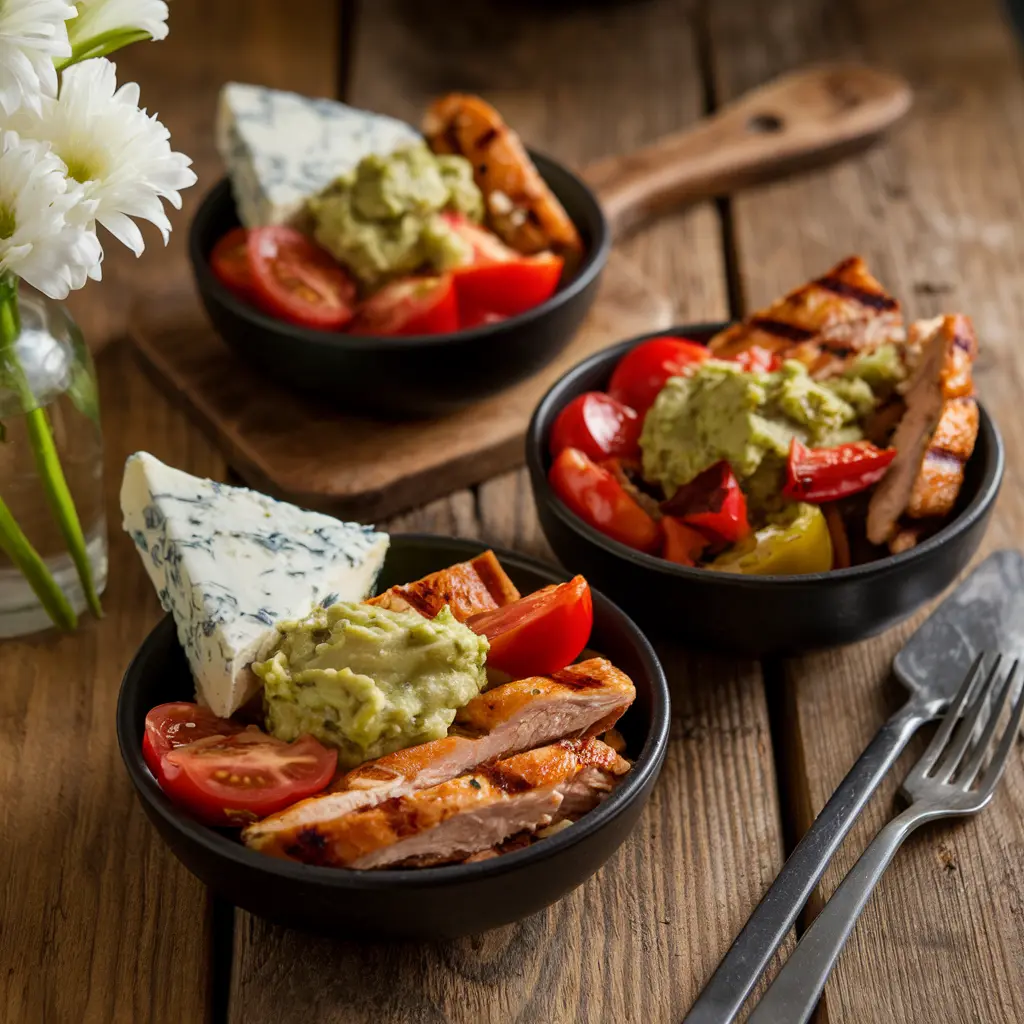In today’s fast-paced world, finding meals that are both convenient and nutritious can be a challenge. Chicken veggie bowls have emerged as a popular choice for individuals and families alike, combining the richness of protein-packed chicken with the wholesome goodness of fresh vegetables. These bowls are not just trendy they offer a customizable, budget-friendly, and health-conscious option for anyone looking to eat well without sacrificing flavor.
The versatility of chicken veggie bowls makes them suitable for various dietary preferences. Whether you’re focused on low-carb options, aiming to incorporate more vegetables into your diet, or simply seeking a hearty and satisfying meal, these bowls fit the bill. Their balanced composition of proteins, fibers, and carbohydrates ensures they keep you fueled throughout the day.
This article delves into the world of chicken veggie bowls, highlighting their nutritional benefits, exploring ingredient options, sharing preparation tips, and offering creative recipes to suit every taste. By the end, you’ll have everything you need to create delicious and nutritious chicken veggie bowls at home, whether for a quick dinner or a week’s worth of meal prep.
Table of contents
The Nutritional Benefits of Chicken Veggie Bowls
Chicken veggie bowls are a powerhouse of nutrition, offering a perfect balance of essential nutrients that support overall health. By combining lean protein, colorful vegetables, and wholesome grains or alternative bases, these bowls cater to diverse dietary needs while delivering outstanding taste.
High-Quality Protein from Chicken
Chicken is a leading source of lean protein, making it a staple in many diets. A single serving of chicken breast is packed with essential amino acids that aid in muscle repair, growth, and overall bodily function. It is also low in fat, particularly saturated fat, which makes it a healthier choice for those managing weight or cholesterol levels. Chicken’s versatility means it can be grilled, baked, shredded, or stir-fried, allowing for endless variations in flavor and texture within your bowl.
The Power of Fresh Vegetables
The vegetables in chicken veggie bowls are where the meal shines in terms of vitamins, minerals, and fiber. Each vegetable brings its unique set of nutrients:
- Spinach and Kale: Rich in iron, calcium, and vitamins A, C, and K.
- Bell Peppers: Loaded with vitamin C and antioxidants.
- Broccoli and Cauliflower: Excellent sources of fiber, folate, and phytonutrients.
- Carrots and Sweet Potatoes: High in beta-carotene, which supports healthy skin and vision.
These vegetables, when combined, offer a vibrant array of colors that signal a diversity of nutrients. The fiber content in veggies also helps with digestion and promotes a feeling of fullness, which is beneficial for portion control and weight management.
Balanced Energy from Grains and Alternatives
Many chicken veggie bowls include a base of grains such as quinoa, brown rice, or farro. These grains provide complex carbohydrates that release energy slowly, keeping you satiated for longer periods. Quinoa, for instance, is a complete protein on its own, making it a fantastic pairing with chicken for a double dose of protein.
For those avoiding grains, alternatives like cauliflower rice, zucchini noodles, or leafy greens work just as well. These options cater to low-carb or keto lifestyles while maintaining the satisfying structure of a well-rounded bowl.
Healthy Fats and Flavorful Additions
Chicken veggie bowls often feature healthy fats in the form of avocado, olive oil, or nuts and seeds. These fats enhance the meal’s flavor and provide essential fatty acids that support brain and heart health. Toppings like sesame seeds, tahini drizzle, or a dollop of hummus add texture and richness while keeping the meal balanced.
A Perfectly Balanced Meal
By incorporating protein, vegetables, and carbohydrates, chicken veggie bowls meet the criteria for a balanced meal. The combination of macronutrients ensures stable blood sugar levels, sustained energy, and overall satisfaction. Additionally, they are highly adaptable for specific dietary needs, such as gluten-free, paleo, or vegan modifications.
Core Ingredients of Chicken Veggie Bowls
The beauty of chicken veggie bowls lies in their adaptability. With endless ingredient combinations, you can tailor your bowl to match your taste preferences, dietary needs, or the contents of your pantry. While there’s no definitive recipe, certain core ingredients form the foundation of a perfect chicken veggie bowl.
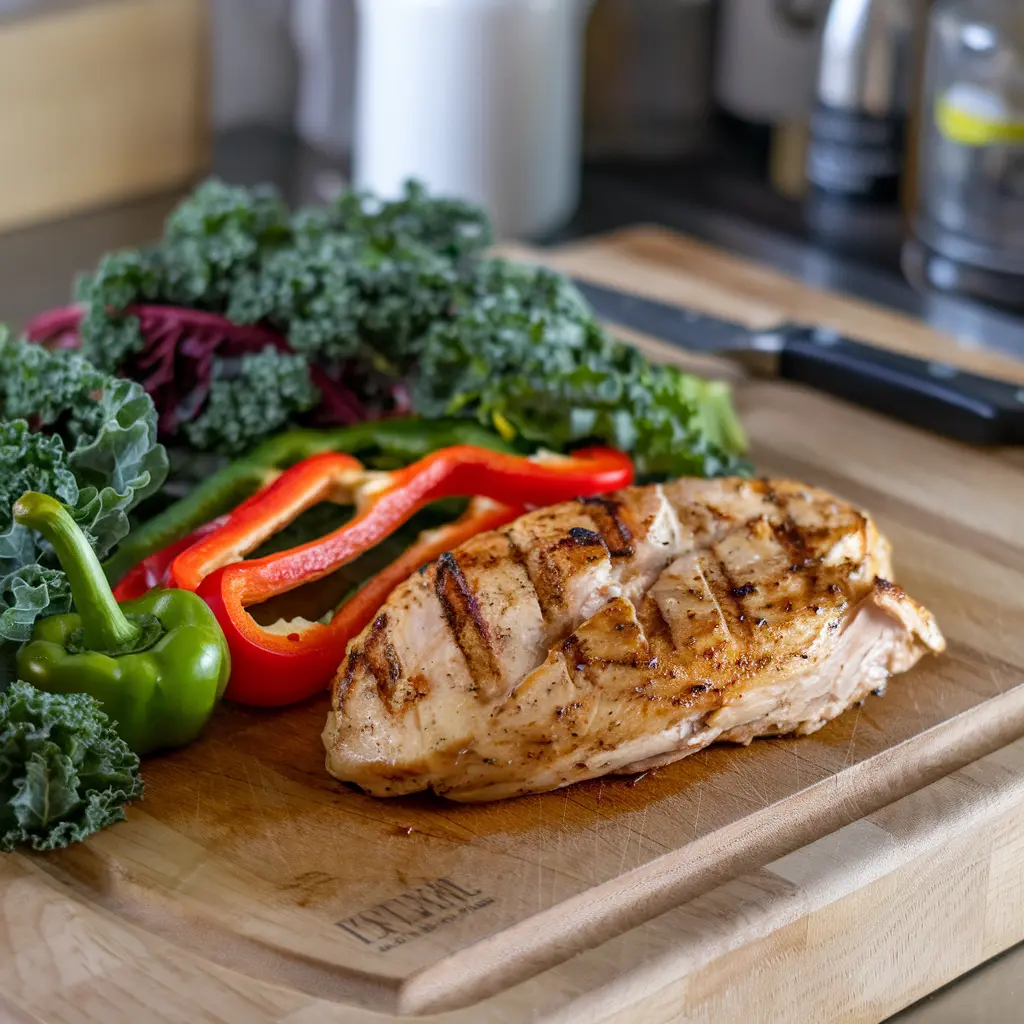
Selecting the Best Chicken
The choice of chicken can significantly influence the flavor and nutritional value of your bowl. Here are some popular options and preparation tips:
- Chicken Breast: Lean, protein-rich, and versatile. Best grilled, baked, or pan-seared with light seasoning.
- Chicken Thighs: Juicier and more flavorful than breasts, they work well when roasted or stir-fried with bold spices.
- Shredded Chicken: Perfect for bowls with a saucy or spiced base, shredded chicken absorbs flavors beautifully.
- Pre-Cooked or Rotisserie Chicken: A time-saving option, ideal for quick assembly without sacrificing taste.
To enhance the chicken’s flavor, marinate it in olive oil, garlic, lemon juice, or soy sauce. Spices like paprika, cumin, and chili powder add depth, while fresh herbs like cilantro or parsley brighten the dish.
The Vegetable Medley
Vegetables are the stars of the show, adding texture, flavor, and nutrients. Mixing raw, roasted, or steamed veggies can create dynamic bowls. Consider these options:
- Leafy Greens: Spinach, kale, or arugula provide a fresh and crisp base.
- Cruciferous Vegetables: Broccoli, cauliflower, and Brussels sprouts bring a hearty, roasted flavor.
- Root Vegetables: Sweet potatoes, carrots, and beets add natural sweetness and a satisfying bite.
- Colorful Additions: Bell peppers, cherry tomatoes, red onions, and zucchini contribute vibrant color and taste.
To maximize flavor, roast or grill your vegetables with olive oil, salt, and pepper. A sprinkle of garlic powder or smoked paprika can elevate their natural sweetness.
Choosing the Perfect Base
The base of your chicken veggie bowl sets the tone for the entire meal. While grains are traditional, there are many alternatives for specific diets:
- Whole Grains: Brown rice, quinoa, farro, or barley provide a chewy texture and complex carbohydrates.
- Low-Carb Options: Cauliflower rice, zucchini noodles, or shredded cabbage for those avoiding grains.
- Leafy Base: For a lighter option, serve your bowl over spinach, romaine lettuce, or mixed greens.
Each base contributes its own texture and nutritional profile, allowing you to customize your bowl to your needs.
Flavorful Toppings and Add-Ons
No chicken veggie bowl is complete without toppings and dressings that tie the flavors together. Popular options include:
- Avocado or Guacamole: Adds creaminess and healthy fats.
- Nuts and Seeds: Almonds, sunflower seeds, or sesame seeds provide crunch and flavor.
- Fresh Herbs: Cilantro, mint, or parsley add brightness.
- Dressings and Sauces: Tahini, hummus, yogurt-based sauces, or vinaigrettes enhance the overall taste.
- Cheese: Feta, parmesan, or shredded cheddar can add a savory touch.
Spices and Seasonings
Seasoning is essential to elevate your chicken veggie bowl. Here are some popular combinations:
- Mediterranean Flavors: Oregano, thyme, garlic, and olive oil.
- Asian Fusion: Soy sauce, sesame oil, ginger, and chili flakes.
- Southwestern Style: Cumin, paprika, lime juice, and fresh cilantro.
Balancing seasonings ensures that each bite bursts with flavor while complementing the natural ingredients.
How to Prepare Chicken Veggie Bowls
Crafting the perfect chicken veggie bowl involves combining fresh ingredients, careful cooking techniques, and a touch of creativity. Whether you’re preparing a single meal or making multiple portions for the week, the process is simple and rewarding.
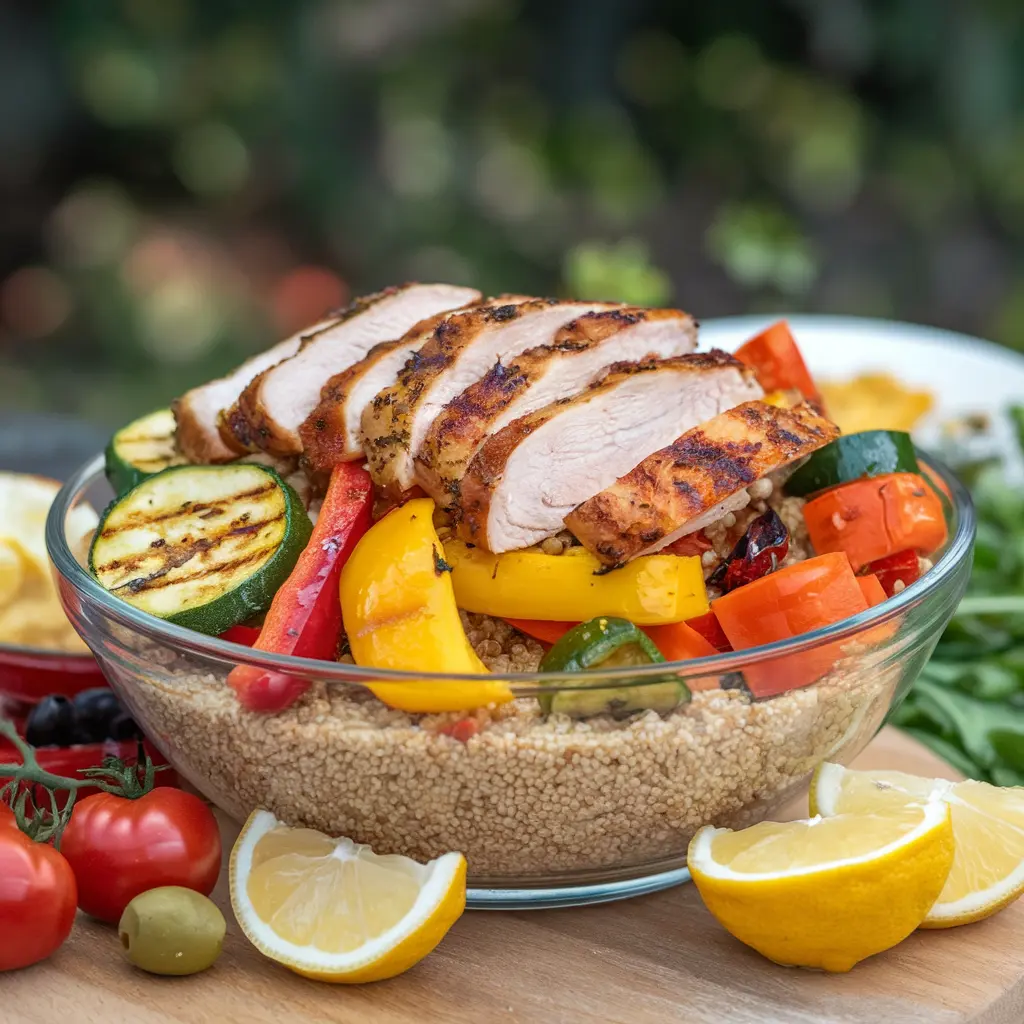
1 – Gather Your Ingredients
Start by assembling all necessary components. This includes:
- Protein: Chicken breast, thighs, or pre-cooked chicken.
- Vegetables: A mix of raw, roasted, or steamed veggies.
- Base: Grains like brown rice or quinoa, or alternatives such as cauliflower rice.
- Toppings: Avocado, nuts, seeds, or fresh herbs.
- Seasonings and Sauces: Olive oil, spices, and a dressing of your choice.
Having everything ready ensures a smooth cooking process.
2 – Prepare the Chicken
The chicken is the heart of the bowl, so it’s important to prepare it well:
- Marinate: For tender and flavorful chicken, marinate it for at least 30 minutes. Combine olive oil, lemon juice, garlic, and spices like paprika or cumin.
- Cook: Grill, bake, or pan-sear the chicken until it reaches an internal temperature of 165°F (74°C). Let it rest for 5 minutes before slicing or shredding.
Pro Tip: To save time, cook chicken in larger batches and store portions in the fridge for up to three days.
3 – Cook or Prepare the Base
Depending on your chosen base, the preparation varies:
- Grains: Cook quinoa, rice, or farro according to package instructions. For extra flavor, use chicken broth instead of water.
- Low-Carb Options: If using cauliflower rice or zucchini noodles, lightly sauté them with olive oil, garlic, and a pinch of salt.
Ensure your base is warm and ready to absorb the flavors of the other ingredients.
4 – Prepare the Vegetables
- Raw Veggies: Wash, chop, and pat them dry for a crisp and fresh addition.
- Roasted Veggies: Toss vegetables like broccoli, carrots, and bell peppers with olive oil, salt, and pepper. Roast at 400°F (200°C) for 20-25 minutes until golden.
- Steamed Veggies: Lightly steam leafy greens, asparagus, or snap peas for a tender texture.
Mix and match vegetable preparation methods to add variety to your bowl.
5 – Assemble the Bowl
Now comes the fun part assembling your chicken veggie bowl:
- Start with the base.
- Add a generous portion of vegetables.
- Layer the cooked chicken on top.
- Sprinkle on your favorite toppings, such as avocado slices, nuts, or seeds.
- Drizzle with a flavorful sauce or dressing to tie everything together.
6 – Enhance the Presentation
Presentation matters, especially if you’re serving guests or snapping a photo for social media. Arrange ingredients in neat sections or mix them for a colorful display. Adding a sprinkle of herbs or a drizzle of sauce can elevate the aesthetic appeal.
7 – Serve and Enjoy
Heading 3: Step 7 – Serve and Enjoy
Once your chicken veggie bowl is complete, it’s time to dig in! Serve it fresh and warm, or pack it into meal prep containers for later. The flavors meld beautifully over time, making them ideal for reheating.
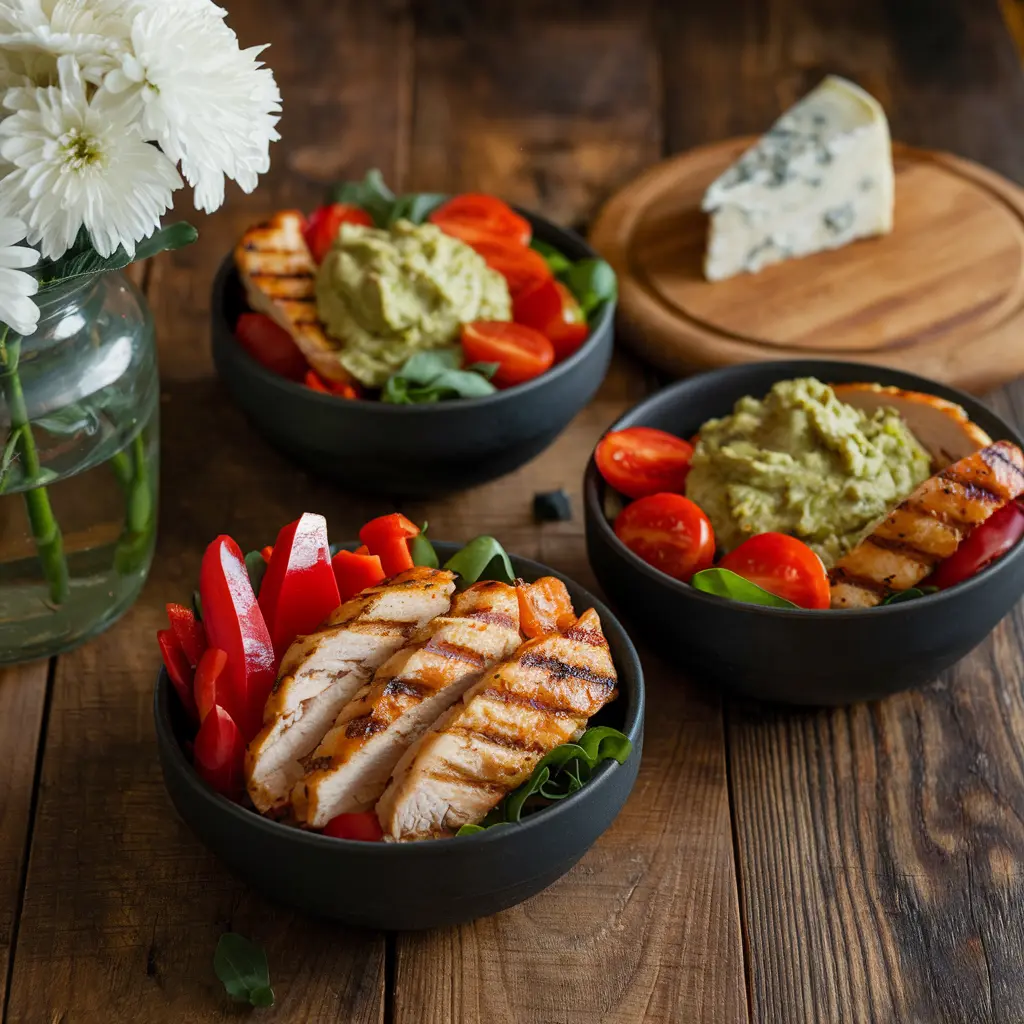
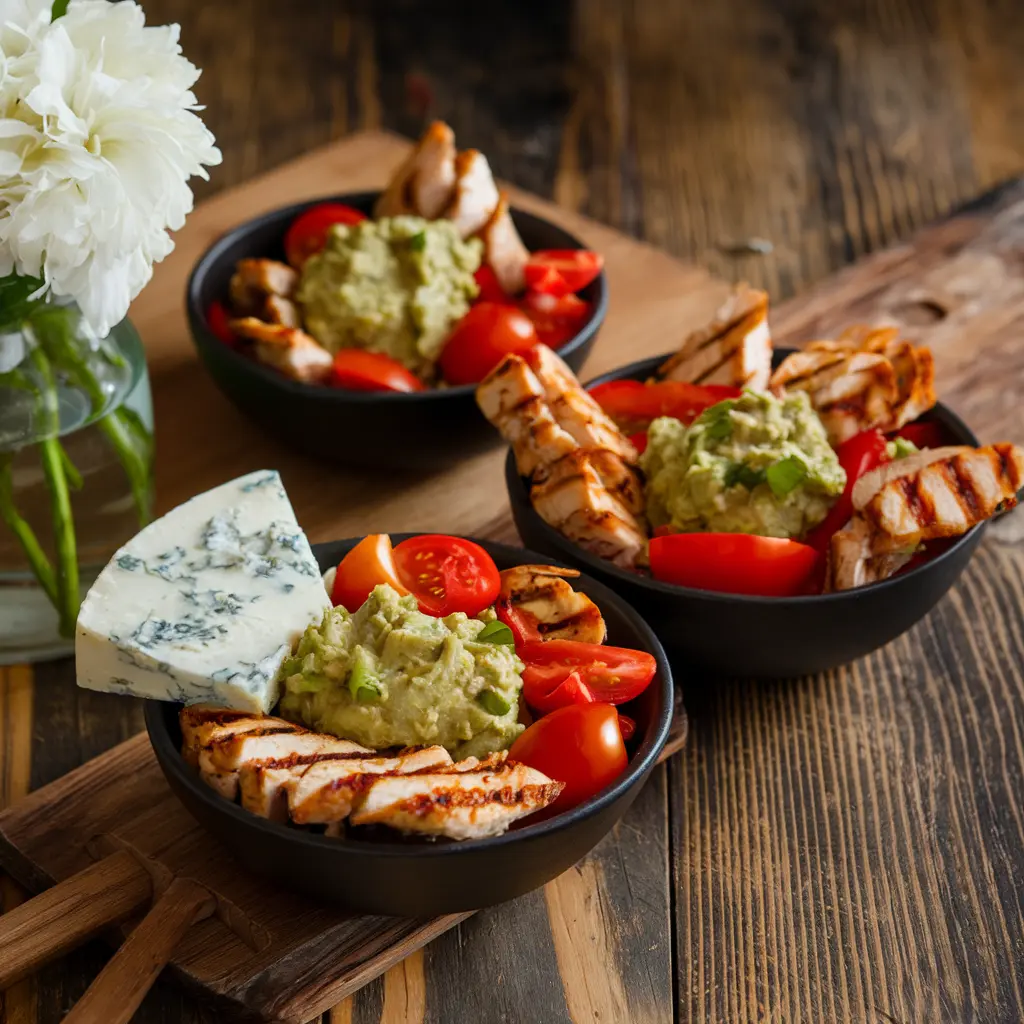
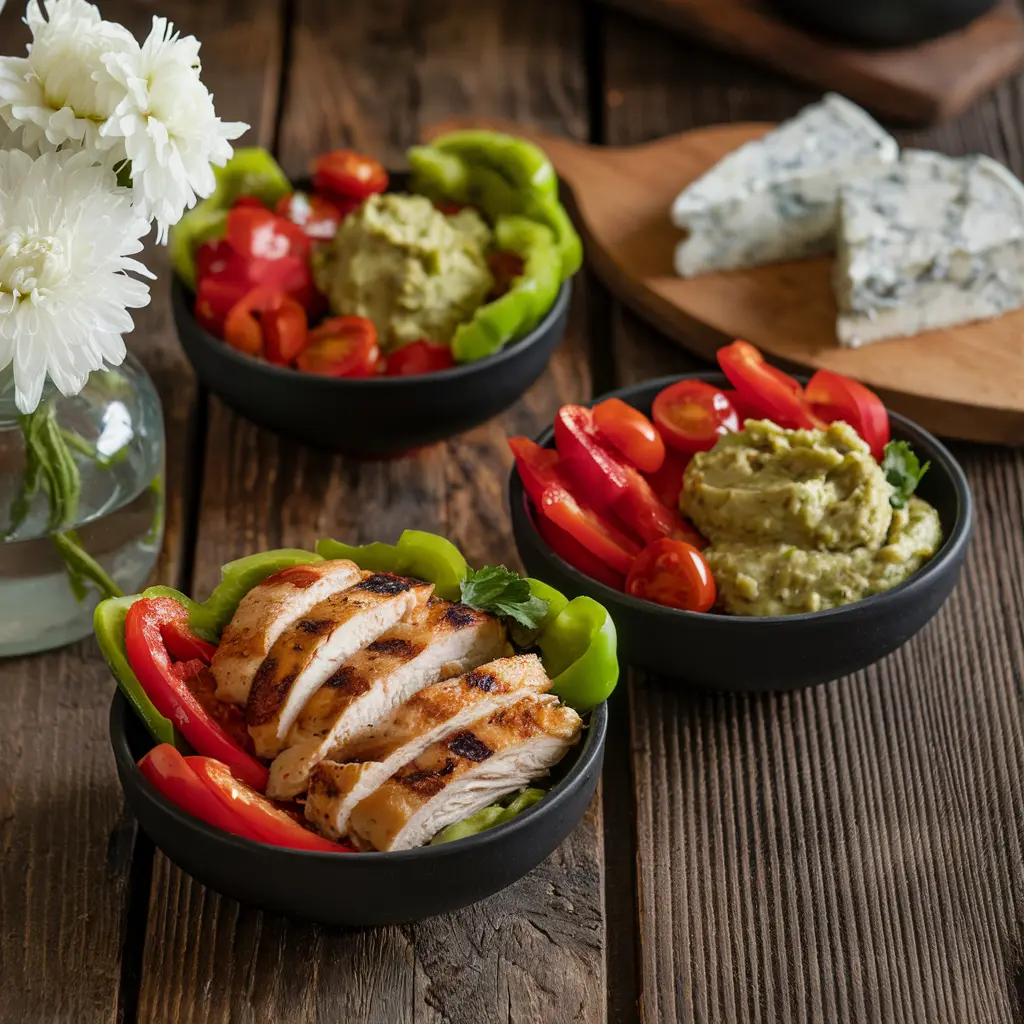
Creative Recipe Ideas for Chicken Veggie Bowls
Chicken veggie bowls are incredibly versatile, offering endless possibilities to suit various cuisines and dietary preferences. Whether you’re craving bold spices, zesty flavors, or something light and fresh, there’s a recipe idea for you. Here are some creative variations to inspire your next bowl.
Asian-Inspired Chicken Veggie Bowl
This bowl combines savory, sweet, and tangy flavors often found in Asian cuisine.
- Base: Brown rice or cauliflower rice.
- Chicken: Teriyaki-marinated chicken thighs, grilled or stir-fried.
- Vegetables: Steamed broccoli, shredded carrots, edamame, and sliced red bell peppers.
- Toppings: Sesame seeds, green onions, and a drizzle of soy sauce or sesame oil.
- Sauce: Homemade teriyaki sauce or peanut dressing for a nutty twist.
This variation is perfect for meal prep or a quick weeknight dinner that feels like a takeout treat.
Mediterranean Chicken Veggie Bowl
Bright and zesty, the Mediterranean chicken veggie bowl is a refreshing option packed with Mediterranean staples.
- Base: Quinoa or farro.
- Chicken: Lemon-herb grilled chicken breast.
- Vegetables: Sliced cucumber, cherry tomatoes, roasted zucchini, and red onion.
- Toppings: Crumbled feta cheese, kalamata olives, and fresh parsley.
- Sauce: A dollop of tzatziki or a drizzle of olive oil with lemon juice.
This bowl delivers a balanced meal with vibrant flavors and a satisfying texture.
Low-Carb Chicken Veggie Bowl
For those watching their carbs, this bowl uses creative substitutes without sacrificing flavor.
- Base: Cauliflower rice or a bed of spinach and kale.
- Chicken: Garlic and paprika-seasoned chicken thighs, pan-seared.
- Vegetables: Roasted asparagus, sautéed mushrooms, and cherry tomatoes.
- Toppings: Avocado slices, toasted almonds, and fresh basil.
- Sauce: A creamy avocado-lime dressing or olive oil with a splash of balsamic vinegar.
This low-carb option is nutrient-dense and filling, making it ideal for those following keto or paleo diets.
Mexican-Inspired Chicken Veggie Bowl
Packed with bold spices and vibrant ingredients, this variation is a fiesta in a bowl.
- Base: Cilantro-lime rice or shredded lettuce for a lighter option.
- Chicken: Shredded chicken seasoned with taco spices.
- Vegetables: Black beans, corn, diced tomatoes, and sautéed bell peppers.
- Toppings: Guacamole, shredded cheese, and a dollop of sour cream or Greek yogurt.
- Sauce: Salsa or a chipotle mayo drizzle.
Serve this bowl with a lime wedge for an extra burst of flavor.
Spicy Buffalo Chicken Veggie Bowl
For those who love a kick, the buffalo chicken veggie bowl is a spicy delight.
- Base: Quinoa or mixed greens.
- Chicken: Buffalo-sauce-coated grilled chicken breast.
- Vegetables: Celery sticks, shredded carrots, and roasted Brussels sprouts.
- Toppings: Blue cheese crumbles and sliced green onions.
- Sauce: A drizzle of ranch dressing or extra buffalo sauce.
This bowl offers a protein-packed meal with bold, spicy flavors balanced by cooling toppings.
Breakfast-Inspired Chicken Veggie Bowl
Who says chicken veggie bowls are just for lunch or dinner? This breakfast version is hearty and energizing.
- Base: Sweet potato hash or roasted diced sweet potatoes.
- Chicken: Breakfast sausage-seasoned ground chicken.
- Vegetables: Sautéed spinach, cherry tomatoes, and roasted mushrooms.
- Toppings: A poached or fried egg, avocado slices, and a sprinkle of chives.
- Sauce: Hot sauce or a light vinaigrette.
This breakfast-inspired option is perfect for starting your day with a nutritious and flavorful meal.
Storing and Reheating Chicken Veggie Bowls
One of the greatest advantages of chicken veggie bowls is their suitability for meal prep. They can be made in advance, stored conveniently, and reheated while retaining their flavor and freshness. With the right techniques, you can enjoy a quick, healthy meal anytime during a busy week.
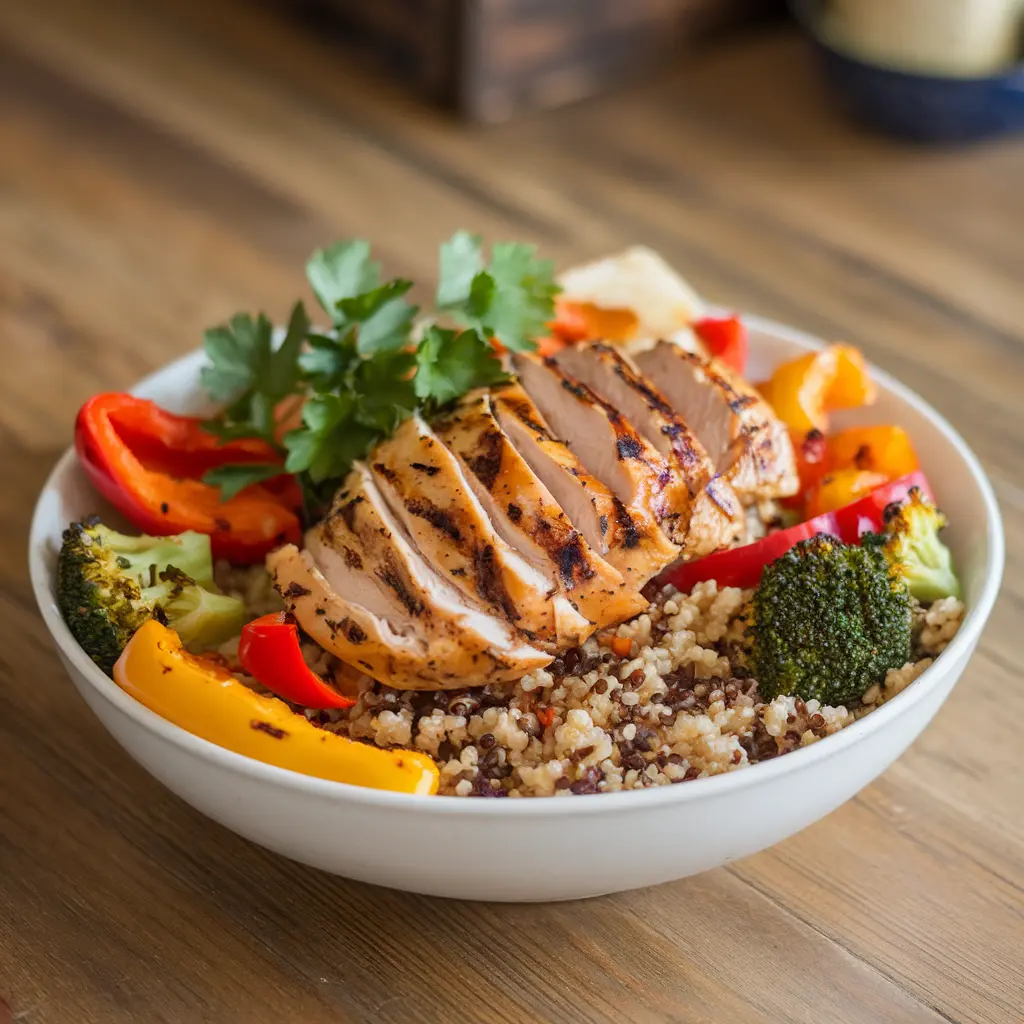
Best Practices for Meal Prep
- Batch Cooking: Prepare larger quantities of chicken, vegetables, and grains at once. This reduces daily cooking time while ensuring you have a consistent supply of ready-made meals.
- Separate Components: For optimal freshness, store certain components like sauces and delicate toppings separately to be added just before serving.
- Use Airtight Containers: Airtight, BPA-free containers help preserve flavor and prevent cross-contamination. Divided containers are especially useful for keeping different elements separate.
Storing Chicken Veggie Bowls
Proper storage is key to maintaining the taste and safety of your prepped meals:
- Refrigeration: Chicken veggie bowls can be stored in the refrigerator for up to 4 days. Ensure the chicken is cooked thoroughly before storage to avoid spoilage.
- Freezing: Most components freeze well, especially cooked chicken and grains. Place them in freezer-safe containers and consume them within 2-3 months for the best quality.
Note: Avoid freezing certain fresh vegetables (like cucumbers) or toppings (like avocado), as they can lose their texture.
Reheating Chicken Veggie Bowls
To enjoy the full flavors of your chicken veggie bowl, reheat it carefully:
- Microwave: Remove any fresh toppings or sauces before microwaving. Heat the chicken, grains, and vegetables on medium power to prevent overcooking.
- Stovetop: For a fresher taste, reheat the ingredients in a skillet over medium heat. Add a splash of water or broth to keep the components moist.
- Oven: Preheat the oven to 350°F (175°C). Transfer the bowl’s contents to an oven-safe dish, cover with foil, and heat for 10-15 minutes.
After reheating, reassemble the bowl by adding fresh toppings and dressing.
Maintaining Freshness and Flavor
- Label Your Containers: Clearly mark the storage date on containers to ensure you consume meals within their safe timeframe.
- Avoid Overheating: Overheating can dry out the chicken or make the vegetables soggy. Heat only until warmed through.
- Reintroduce Freshness: Add fresh herbs, a squeeze of lemon, or a drizzle of dressing after reheating to revive flavors.
Quick Tips for On-the-Go Meals
For busy days, pack chicken veggie bowls in portable containers that are microwave-safe. Include a separate small container for dressings or sauces to prevent sogginess. This setup is perfect for work lunches or travel-friendly meals.
Frequently Asked Questions (FAQs)
Can I make chicken veggie bowls ahead of time?
Yes, chicken veggie bowls are perfect for meal prep. You can cook all components in advance and assemble them into containers for the week. For optimal freshness, store toppings like avocado or dressing separately and add them just before eating.
What is the best way to keep chicken veggie bowls from becoming soggy?
To prevent sogginess, store wet ingredients (like sauces or dressings) separately. Also, avoid overcooking vegetables if you plan to store them, as this can release extra moisture. Use airtight containers to keep everything fresh.
Are chicken veggie bowls good for weight loss?
Absolutely! Chicken veggie bowls are balanced meals that combine lean protein, fiber-rich vegetables, and healthy fats. By controlling portion sizes and choosing low-calorie dressings, they can support weight management goals effectively.
Can I use other proteins besides chicken?
Definitely. Chicken veggie bowls are versatile and can be made with other proteins like turkey, tofu, shrimp, or beef. Plant-based options like tempeh or chickpeas also work well for a vegetarian or vegan alternative.
How long do chicken veggie bowls last in the fridge?
Properly stored in airtight containers, chicken veggie bowls can last up to 4 days in the refrigerator. Ensure the chicken and other components are fully cooked before storage for safety.
Can I freeze chicken veggie bowls?
Yes, most components of chicken veggie bowls freeze well, such as cooked chicken, grains, and roasted vegetables. Avoid freezing raw vegetables or dairy-based dressings. Consume frozen meals within 2-3 months for the best quality.
Conclusion
Chicken veggie bowls are more than just a meal; they’re a solution to the challenges of healthy eating in a busy world. Their versatility, convenience, and nutritional benefits make them a staple for anyone seeking delicious, balanced, and customizable meals. From Mediterranean-inspired creations to spicy Buffalo-style bowls, the options are endless, ensuring you never get bored.
By following the steps in this guide, you can prepare, store, and enjoy chicken veggie bowls at your convenience. Whether you’re looking for a quick dinner or meal prep for the week, these bowls offer an excellent way to stay on track with your dietary goals while savoring mouthwatering flavors.

